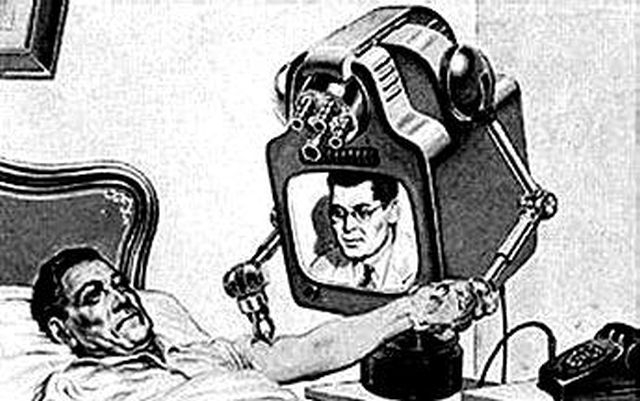Teledoctors: Accessibility to Medical Advice Anytime, Anywhere
Teledoctors: Accessibility to Medical Advice Anytime, Anywhere
Blog Article
Teledoctors: Connecting the Space Between People and Doctor
The emergence of teledoctors represents a substantial shift in the medical care landscape, offering solutions to enduring availability concerns faced by companies and people alike. By integrating telemedicine right into traditional practices, health care systems can reach remote and underserved populations, offering vital medical assessments without the barriers of range and travel.
Surge of Telemedicine

The rise of telemedicine is additionally fueled by the requirement for cost-efficient medical care. Healthcare systems around the world are under pressure to reduce expenses while preserving quality treatment, and telemedicine provides a practical option. By lessening the requirement for physical check outs, telemedicine reduces overhead prices for medical care facilities and inevitably lowers the monetary burden on individuals.
Additionally, the COVID-19 pandemic acted as a catalyst, increasing the fostering of telemedicine techniques. Social distancing measures and the requirement to lessen exposure threat demanded a change towards remote appointments, triggering regulative bodies to adapt and sustain telehealth services. This shift has not only tested telemedicine's effectiveness yet likewise its potential to advance as a staple element of modern health care systems.
Benefits for Patients
As telemedicine proceeds to reshape medical care shipment, people stand to gain dramatically from this improvement. Mostly, telemedicine boosts availability, allowing individuals in remote or underserved areas to seek advice from medical care companies without the need for substantial travel. This is especially valuable for people with flexibility issues or those living in rural regions where healthcare centers could be limited. Telemedicine likewise provides people the convenience of receiving clinical guidance and treatment from the comfort of their homes, minimizing the time and price connected with traveling to a health care center.
Furthermore, telemedicine sustains continuity of care by facilitating normal follow-ups and surveillance, which are important for handling persistent problems. Clients can quickly schedule consultations and gain access to healthcare solutions outside conventional office hours, suiting their active way of lives. This versatility results in enhanced client engagement and adherence to treatment strategies, possibly causing much better health and wellness results.
In addition, telemedicine can assist mitigate the risk of infection transmission, a problem increased by the COVID-19 pandemic. By reducing the need for in-person sees, patients can avoid jampacked waiting rooms and minimize exposure to transmittable ailments. Inevitably, telemedicine equips clients by supplying prompt, effective, and customized healthcare services.
Advantages for Carriers
For doctor, telemedicine offers substantial benefits that enhance the performance and reach of their practice. By leveraging digital technology, carriers can prolong their solutions to a more comprehensive group, including those in remote or underserved areas. This not only eases geographical barriers however also enhances person retention and acquisition by making health care much more easily accessible.
With telemedicine, the need for physical space lessens, permitting suppliers to save on real estate and operational expenditures. This flexibility can lead to enhanced client examinations per day, thus increasing income capacity.
Telemedicine additionally fosters a more collaborative environment for health care providers. teledoctors. It allows seamless sharing of individual information amongst specialists, enhancing diagnostic accuracy and therapy end results. Furthermore, electronic systems can incorporate with digital health and wellness documents (EHRs), enhancing data precision and enhancing administrative tasks
Furthermore, telemedicine improves patient complete satisfaction, which is vital for copyright online reputation and success. By supplying timely and convenient care, carriers can improve person loyalty and engagement, additionally strengthening the provider-patient partnership.
Conquering Challenges
While telemedicine provides various benefits for health care carriers, it additionally offers obstacles that need careful consideration. Health care suppliers need to stick to stringent laws like HIPAA to protect sensitive info, thereby calling for investment in secure platforms and continuous personnel training. teledoctors.
One more challenge is the electronic divide, which can impede access to telemedicine solutions. Not all patients have equal accessibility to the necessary technology you can try this out or internet connection, specifically those in underserved or rural locations. This difference can worsen existing healthcare inequalities, making it critical for companies to check out alternate solutions, such as collaborations with neighborhood companies, to link this space.
In addition, there are constraints in conducting health examinations from another location. Particular conditions require in-person assessment, highlighting the requirement for a crossbreed Get More Information version that integrates telemedicine with typical sees. Suppliers must navigate these challenges by establishing methods to recognize when telemedicine is suitable and making sure smooth changes between digital and in-person treatment.
Future of Healthcare
The future of medical care is poised for a transformative advancement, driven by the fast assimilation of modern technology and technology. Central to this change is the surge of telemedicine, which is redefining just how medical services are accessed and provided. With innovations in digital communication, telehealth systems are coming to be much more innovative, offering real-time examinations, remote person surveillance, and customized treatment strategies. This not only boosts individual benefit however likewise increases accessibility to medical care, especially in underserved and rural locations.
Expert system (AI) and artificial intelligence are also set to play pivotal duties. These innovations can analyze huge amounts of information, offering predictive understandings into client health and wellness, boosting analysis precision, and customizing treatment plans. AI-driven tools can augment doctor' abilities, bring about even more educated decision-making and much better person results.
Furthermore, wearable technology and Internet of Medical Things (IoMT) devices are revolutionizing client engagement and positive health monitoring. These tools enable continual health monitoring, permitting very early discovery of possible problems and prompt interventions.
As these innovations remain to breakthrough, they guarantee to create a much more efficient, available, and patient-centric healthcare system, eventually bridging the void between people and healthcare companies. - teledoctors
Final Thought
Teledoctors are changing medical care by dramatically boosting ease of access and efficiency through remote consultations. This innovation sustains patients in underserved areas by providing prompt medical advice without calling for physical brows through, thus boosting individual engagement and connection of care. Doctor benefit from extra reliable time monitoring and boosted partnership opportunities. Regardless of difficulties such as technical obstacles and regulative problems, the future of health care shows up reliable and significantly comprehensive because of the assimilation of telemedicine More about the author right into typical care versions.

As telemedicine proceeds to reshape health care delivery, clients stand to obtain substantially from this makeover. Mostly, telemedicine enhances accessibility, permitting clients in underserved or remote areas to speak with healthcare companies without the need for comprehensive travel. Telemedicine also offers people the benefit of getting medical guidance and treatment from the convenience of their homes, reducing the time and expense associated with taking a trip to a medical care center.
Ultimately, telemedicine empowers individuals by providing prompt, efficient, and personalized health care solutions.
Report this page